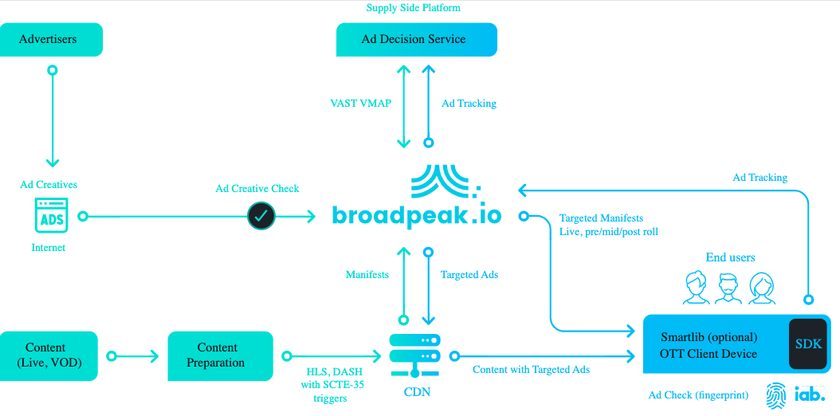Transmitter technology
The modern TV transmitter seems to be treated as a component in a much larger system, which may be scattered anywhere the Internet can reach. Remote control system manufacturers are heavily involved in systems that provide control of multiple transmitters, while monitoring the parameters of those stations automatically to insure their operation stays within a prescribed set of limits.
The transmitters themselves are designed toward that goal. It has been several years since there were show demonstrations where the entire exciter was controlled by a laptop. That included viewing the eye diagrams, turning the necessary corrections on and off and manually adding to those corrections if one didn't trust the automatic circuitry. Actually, the automatic circuitry usually did a better job than the manual adjustments.
The technology of the transmitters themselves has not made huge strides in the past few years, other than improved control systems. Perhaps the most notable improvement in the past year has been the elimination of the crowbar circuit. At NAB2005, Thales showed its product without that little device, and it can safely be assumed that other manufacturers will follow.
The purpose of the crowbar was to crash the energy existing in the power supply when that system was shut down due to a detected arc in a klystron amplifier. The result was that klystron would not suffer catastrophic failure. Now, the power supply folks have developed a method whereby the inrush of current to the klystron is controlled by the supply itself, eliminating one more high-voltage device from the system.
Otherwise, the change in transmitters has been a migration rather than a huge leap. Several manufacturers are offering both VHF and UHF DTV transmitters at power levels up to 20kW in solid-state units and as high as you want to go in klystron-type systems. Solid-state transmitters that are air-, oil- or water-cooled are now available. Klystrons in various configurations are also available, each with its own set of advantages or problems. And the klystrode is even still around, though not in the great abundance that was once anticipated.
Obviously, a great deal of work is not going into NTSC transmitters these days. Like it or not, that buggy whip technology will eventually go the way of the slide rule. The work is on the DTV side, where some fascinating test systems are available to help adjust the transmitter to meet the critical requirements of the 8-VSB modulation scheme.
Essentially all of the manufacturers will furnish their transmitter purchasers with a complete set of test equipment, mounted in a rack of their own including all the interconnecting wiring harnesses to plug right into the transmitter. In addition to an HD video monitor, the system will usually include something like the Tektronix RFA300A or one of its competitive products.
The RFA300A is a good example of the measurement sets offered. It really is designed to be installed with the DTV transmitter and used not only for repairs but also as a continuous monitoring system. The device measures a broad range of parameters starting with signal-to-noise, error vector magnitude, the eye diagram and constellation.
The system will permit the operator to easily monitor compliance with the DTV mask. The FCC recently clarified methods for ensuring that the transmitter emissions complied with the mask. For more, see DA 05-1321, May 10, 2005, at www.fcc.gov. That document primarily deals with the use of spectrum analyzers to do the measurements. Basically, don't try this measurement with an older analog spectrum analyzer. However, the mask compliance, as well as other out-of-channel emissions, is simple to analyze with this test system.
It also measures transmitter group delay. In days happily gone past, group delay was a parameter that was essentially confirmed by simply wishing it so. Supposedly, a measurement was done at the factory, and that data furnished with the transmitter. As almost no one had the equipment to do this measurement in the field, an automatic assumption was made that nothing had changed and everything was fine. It was sort of like saying that if the current and voltage on an amplifier were just like in the original test data, the power must be right. Sure. You bet. However, if a little group delay error did creep into the system, it wasn't a really big deal in NTSC days. It is a big deal for DTV.
The frequency response and spurious functions are equally easy to use. Again, not like the days when one used an early sideband measuring system to proof the transmitter. Standard practice was to keep the camera ready while the sideband measuring equipment was slowly adjusted. If the camera operator noticed anything that looked like the pictures in the transmitter manual, he would immediately take the photograph so it could be included in the proof.
Before it appears that this is a Tektronix advertisement, it is worth noting that many of the measurements and displays found with the RFA300A can also be found in some interesting portable equipment.
A choice example is the Rohde & Schwarz FSH3-TV — a small, handheld, battery-powered unit that provides the demodulation and testing capabilities to meet most transmitter tuning requirements. The necessary output waveforms can be connected directly to a monitor as well as be observed in smaller scale on the instrument. In addition, the instrument will perform as a vector network analyzer when connected to a suitable bridge. It even will do distance-to-fault measurements when that option is added. The price is reasonable when compared with the big systems, and the quality is typical Rohde & Schwarz.
So, the name of the game around the transmitter room seems to be that the transmitters themselves are being designed toward self control and monitoring.
The test equipment has become infinitely more sophisticated and capable. The large systems for permanent installation not only provide essentially all the information needed in the adjustment of a modern transmitter, but also will send you an e-mail or page you if a problem does occur. The station engineer can control his system from the convenience and privacy of his favorite bar or recliner. However, it may be a little bit hard to convince the front office that you are really on duty with your feet propped up and a cold one next to you.
Don Markley is president of D.L. Markley and Associates.
Get the TV Tech Newsletter
The professional video industry's #1 source for news, trends and product and tech information. Sign up below.











